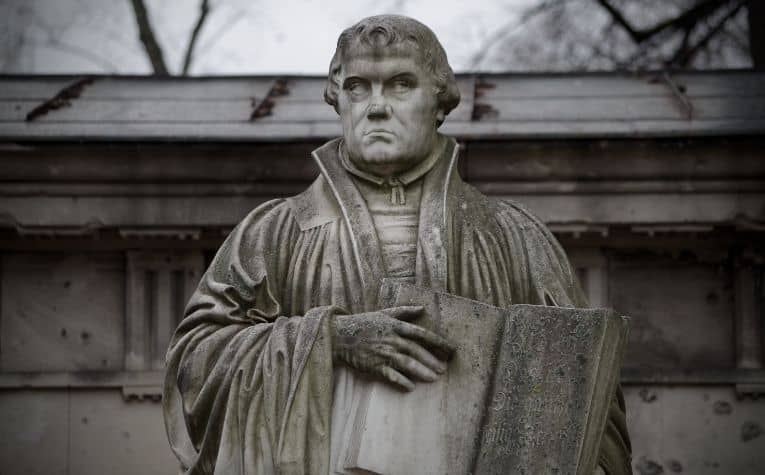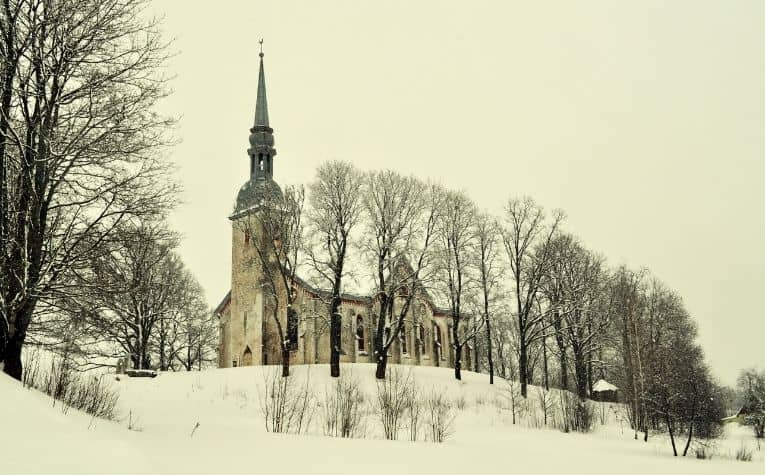The event known as the Reformation forced age-old religious establishments in Europe to re-examine the ways that they connected with their bases, and in the case of the Catholic Church, split a venerable institution down to its core, giving rise to the Lutheran faith in Northern Europe.
German monk and lecturer Martin Luther’s criticism of the Catholic Church in the 16th century was intended to encourage dialog but instead led to religious upheaval and dramatic changes in the church’s structure and practices.
This resulted in the spread of Lutheranism throughout Northern Europe.
Not in his wildest dreams could Luther have imagined that an act of defiance would mark the beginning of a movement that not only revolutionized how religion was practiced but also changed the dynamic between those in positions of power and the populace over whom they ruled.
However, the most dramatic turn was the fracturing of the Catholic Church’s base and the formation of an entirely new Christian doctrine.
Scandinavia has a fascinating religious history. See Religion in Scandinavia to learn more.

Why is Northern Europe Mostly Lutheran?
In 1517, Martin Luther published his seminal work, The 95 Theses.
In this document, he condemned the Catholic Church’s practice of selling “indulgences,” which were essentially a form of amnesty that the wealthy and powerful could purchase in order to reduce the time spent in purgatory.
These indulgences thus hastened the period of redemption. In other words, the rich could buy their way to the front of the line leading to salvation.
In Luther’s eyes, the Catholic Church had devolved into an organization that was completely out of touch with the masses it was supposed to serve.
It placed corrupt officials in positions of power, which they adeptly manipulated for financial and other gains.
The Christian Bible was written in Latin, and archaic Catholic Church services were likewise spoken in it.
Still, the average citizen in Europe during the 16th century could neither read nor understand Latin, so the chasm between them and God (and hence, salvation) was long, wide, and deep.
According to Luther, this was but one major symptom of an institution that was diseased and in need of cleansing. [1]
Lutheranism encountered the Norse religion in Scandinavia. See Is the Norse Religion Still Practiced? to learn more.

Martin Luther and His 95 Theses
On a fundamental level, Luther believed that grace could be achieved by faith alone.
Thus salvation would come to those who earned such distinction by being good Christians and not by having:
- Deep pockets
- Social power
- Strong political affiliations
Thus, commoners had as much opportunity to achieve absolution in God’s eyes as those of nobility, royalty, and even those who served the Church. [2]
The Reformation was not a religious revolution that occurred overnight.
By the time Martin Luther nailed his 95 Theses to the All Saints’ Church’s doors in the German town of Wittenberg, there was already great and widespread dissatisfaction with the suppressive and corrupt activities of the Catholic Church, not just in Germany but throughout much of Northern and Western Europe.
Martin Luther simply provided the spark that set religious reform ablaze, and from there, it spread like wildfire throughout Germany and then Northern Europe.
What bolstered the spread of Luther’s fiery opinions was a relatively new piece of technology that was still in its infancy during the early 16th century: the printing press.
What once would have taken months, if not years, to reach people but a few borders away could now reach a bigger audience in a fraction of the time thanks to the printing press.
It is said that printings of Luther’s 95 Theses were available in Switzerland a few months after he posted his handwritten original.
And Luther, being a prolific and talented writer, took full advantage of this technological advancement. [3]
Lutheran Beliefs and Teachings
Luther’s teachings resonated with peasants and nobles alike, albeit for different reasons.
Commoners throughout Northern Europe felt alienated and excluded by the Catholic Church on many levels, all of which contributed to their willingness to embrace the alternate version of Christianity.
Perhaps most importantly, the concept of salvation was put forth by Luther.
These are a few highlights of Lutheranism:
- God’s grace (and hence, salvation) was earned through faith (and not the accumulation of certificates evidencing the purchase of indulgences)
- Faith is itself measured not so much in terms of theological intellect or emotional equity but rather on a far more basic premise of placing one’s trust in God
- The Bible and other important religious works should be written in native languages other than Latin (which only highly educated people can understand)
- Sermons should be spoken in the native tongue
- All Christians are priests in the sense that they share a responsibility to pray for others and promote Christian teachings
- Good deeds should be performed not for God (who does not need them) but for people (who do) [4]
The Vikings play a significant part in Scandinavian history, but what did they believe? See Were the Vikings Christian? to learn more.

Lutheranism in Northern Europe
Luther’s influence originated in his native Germany and quickly spread among German nobles (including the Elector Frederick of Saxony, who likely saved Luther from execution) and commoners.
At that time, Germany was a major hub for commerce and religion.
While its ports and trade towns were bustling with business activity, it also exerted great power over the entire region’s religious practices.
Germany served as an academic center as well, as German universities drew students from neighboring countries, including those throughout Northern Europe.
Thus, with the free flow of ideas in Germany, aided by the mass availability of written works produced on the movable-type printing press, Luther’s writings gained a following not just in Germany but in neighboring countries to the north as well.
This was particularly true for the nations of what is now Scandinavia. [5] [6]
Lutheranism in Scandinavia
The lands and people made famous by the Vikings during their heyday were largely Christian centuries before the Reformation.
But as signs of religious turmoil began to take shape within their powerful neighbor to the south, Luther’s writings and teachings not only crossed the borders into Scandinavian nations, they struck a chord among their people.
- Denmark – a former student of Luther named Hans Tausen, is credited with bringing Lutheranism to Denmark in the early 16th century. It was recognized by the Danish King, Frederic 1st, in 1523. During the reign of his son Christian III, Lutheranism was officially adopted as the state religion, and a new Danish-language liturgy was adopted.
- Norway – as a territory under Danish control during the 16th century, Norway was subjugated to, among other things, religious control. As subjects of the Danish King, Norwegians were therefore forced to adopt Lutheranism as their national religion. Conversion from Catholicism was a slow process, particularly in rural, lesser-developed areas.
- Sweden – in 1523, Sweden asserted its independence from its Danish occupiers and, under King Gustave Vasa, took steps to free the nation from the economic and social shackles imposed by the Catholic Church. Formal action was taken in 1527 with the formation of the national church of Sweden, led by the Petri brothers, who studied under Luther.
- Finland – like Norway’s introduction to Lutheranism under Danish rule, Finland was subjected to Sweden’s national religion as one of its territories. With the translation of the Bible into Finnish in the middle of the 16th century, Lutheranism became the official religion of Finland (but the Finnish version bore many similarities in rituals and practices with Catholicism). [7]
Even centuries after the Reformation, the majority of the population (approximately 58%) in Northern Europe is either Evangelical Lutheran or Lutheran.
Outside of the United Kingdom and the British Isles, Lutheranism’s dominance as the primary religion in certain Northern European countries is even more stark, particularly in the Scandinavian countries. Here are the numbers:
| Scandinavian Country | % of Luthernas |
|---|---|
| Denmark | 80% Evangelical Lutheran |
| Finland | 73.8% Lutheran |
| Iceland | 73.8% Evangelical Lutheran |
| Norway | 82.1% Evangelical Lutheran |
| Sweden | 87% Lutheran |
Conclusion
What began as a protest against corruption in the Catholic Church became the Reformation and gave rise to the most popular religion in Northern Europe.
Also see Why Did the Vikings Worship Odin? to learn more.
References:
[1] Source
[2] Source
[3] Source
[4] Source
[5] Source
[6] Source
[7] Source
[8] Source
